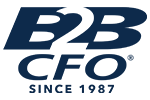
The Finances Of A Growing Business Chapter 3
Posted on March 31, 2020 by Terry Eve
The theme of my Blogs for this year is what I would include in a book about small business finance and accounting. This month I will discuss the finances of a growing business.
Rule 1 of the finances of a growing business: Growth requires capital, cash specifically. It is totally possible for a company to grow itself out of business, that is create insolvency as a result of growth. Growth consumes capital, perhaps lots of it. Why? Let’s investigate.
The Sales Cycle
There is a lead time from the point of sale to the point cash is received. If your company carries inventory that needs to be acquired first. A service business must have personnel to deliver the services.
Consider this: We buy Inventory on day 1, assume our inventory takes 45 day to turn and we pay for it on day 30. We carry the inventory cost for 15 days. On day 45 we sell the inventory and will collect that money in 45 days too. Note that these two amounts indicate that we have an average of 45 days in inventory and A/R. So this means it will take 60 days to get repaid for the cash outlay for the inventory the 15 days after payment net 30 and the 45 days to collect the receivable. Over that same 90 days we will incur 90 days of payroll (1/4 year!), 90 days of rent and 90 days of general overhead. All incurred prior to collecting the money on the sale that pays for all of these expenses and costs. Get the picture? This is not sustainable without adequate capital. Once you collect the money, you buy more inventory, and incur more payroll overhead.
And that doesn’t calculate the need for money for capital expenditures (Cap ex). Have your capital expenditures been properly budgeted and have you calculated the ROI on the invested cash? More money out the door in anticipation of future profits.
So consumption of cash includes:
- Increases in Accounts Receivable
- Increase in Inventory
- Increased net working capital
- Payroll, General & Administrative overhead and other expenses
- Purchasing Property, Plant and Equipment
- Debt reductions including payment of trade payables and bank debt
So where does the money come from?
- Net Income
- Debt
- Bank Loans
- Trade Payables
- Shareholders & Other Loans
- Asset Liquidations (unlocking Cash)
- Improved turnover (reductions) of Accounts Receivable & Inventory
- Sell off of excess fixed assets
- Building sale /leasebacks
- Equity Investors
So let’s look at a cash flow statement:
Statement of Cash Flows
Cash consumed by Operations
- Net Income $ 1,500
- Increase A/R (2,000)
- Increased Inventory (5,000)
- Increased Accounts Payable 5,000
- Total Cash consumed by Operations ( 500)
Cash from Financing Activities
- Increase in Bank Loans 10,000
- Increase from Issue of Common Stock 3,000
- Total (13,000)
Cash consumed in Investing Activities
- Purchase Fixed Assets (2,500)
- Increased Cash Balance $10,000
This statement is read as follows:
- Positive net income is a source of cash
- Increased Receivables & Inventory reduced cash
- Accounts payables go up, this increases cash
The company ran a negative cash flow from operations because it had to carry the additional receivable and inventory caused by the company growth. The company issued stock and took on additional debt to increase cash and spent part of this money on fixed assets. So the company would have had a net decrease in cash of $3,000 ($500 from operations and $2,500 from the purchase of fixed assets) had they not obtained outside funding from banks and issuance of stock. In the event the company did not have access to these funds, their cash balance would be $3,000 less than the year before. OK, $3,000 doesn’t seem like allot, so add three zeros and make it millions. The point is how long can a company operate without access to outside capital. And if it is not corrected, the company will enter what we at B2B CFO call the “Danger Zone”, based on the book by our CEO and Founder Jerry Mills, “The Danger Zone, Lost in the Growth Transition.”

